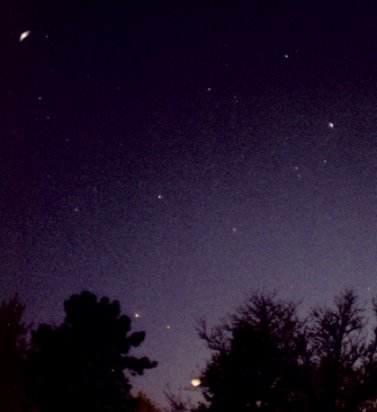


 |
 |
 |
Skylights featured on |

| If you like stars, go to STARS: Portraits of Stars and their Constellations, compiled from previous stars of the week. | Enjoy photographs of the January 20, 2000 total eclipse of the Moon. | Watch planets move against the background stars. | See sunsets, rainbows, the Moon and planets, and other sky phenomena in Sunlight. |